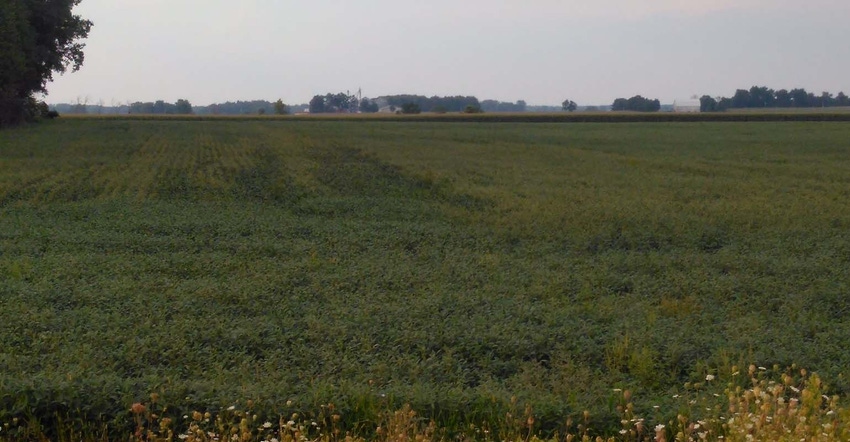August 31, 2017

Here are three things I’ve been hearing about on my recent travels.
Dicamba drift. Many farmers in Indiana frequently use dicamba products in their corn fields, so most guys don’t get to concerned when they see a little crinkle on the soybeans. However, I do not discount those who have concerns about damage to their crops. I know retailers have taken seriously the complaints and company reps were required to turn in any potential drift concerns in to the state chemist for investigation. Reading between the lines at one of the meetings, it seems the seed industry seems to have a great solution to the dicamba soybean problem: if we all plant the resistant beans, there will be far fewer complaints. That solution probably won’t sit well with specialty crop growers though.
Yields. Always a topic at the dinner table was yields. We are pretty far along here. Recent rains have likely halted yield losses we had been suffering for 10 days. Even though we may be in one of the better areas, you don’t have to look far to find nutrient deficient crops. Pot holes are also commonplace. Many people mentioned the difficulty planting this spring. Some mentioned replanting twice, only to have it flooded out again. Recent travels revealed head tall corn that was even drowned out. The seed company set a record this year, it is one they don’t want to ever break… most units delivered for replant. It will be interesting to see how the later planted crops fare, so far August rains for the most part have failed to deliver in quantity.
Non-GMO. I heard this more times than I expected. That either means more guys are growing non-GMO, or are thinking about it. For me that typically means it is time to move on to something else. Premium programs have been disappointing the last few years while weed control is getting more complex.
As for the picture posted with this blog, I saw the field along the highway. I have no way to confirm it was dicamba damage. However it does appear there was some sort of a sprayer clean out damage. The beans on the end are hurt the worst, the growing point stopped growing. Presumably that is where the spraying began. As the sprayer traveled down the field you may be able to see wedges as the booms were filled with new material. In balance of the sprayed area, you can see the odd growth with smaller leaves and longer internode. Harvest will be the only way to determine what damage was done. It appears there were beans in the field that we not sprayed which can be used a ‘check’.
The opinions of the author are not necessarily those of Farm Futures or Farm Progress.
About the Author(s)
You May Also Like






